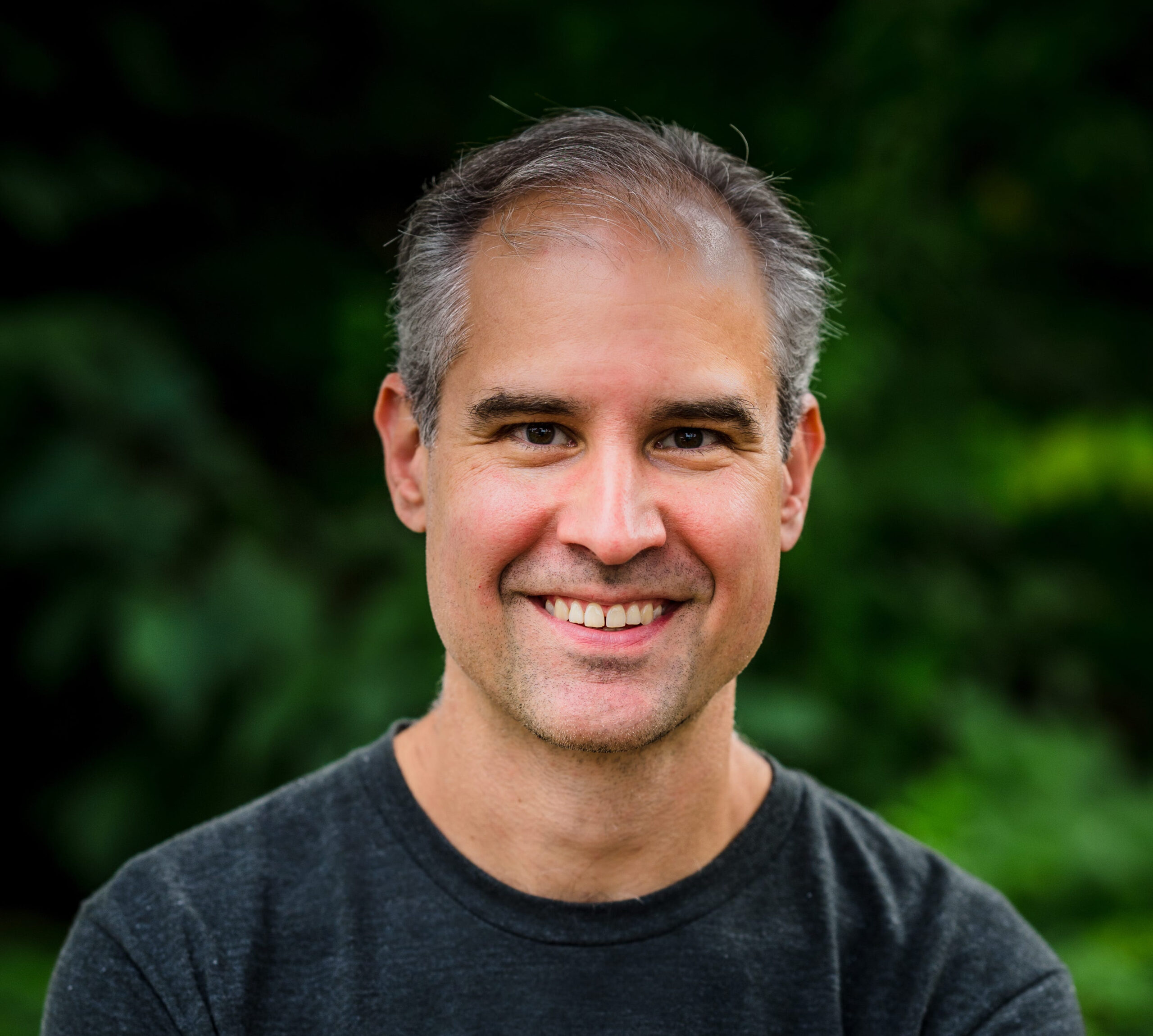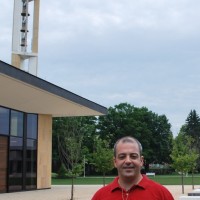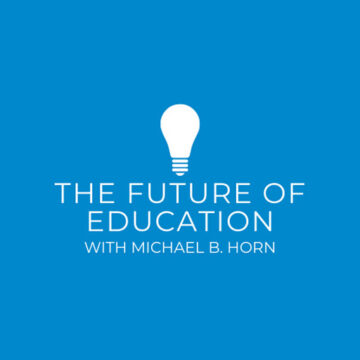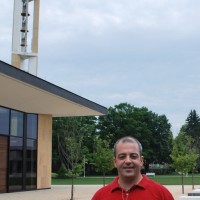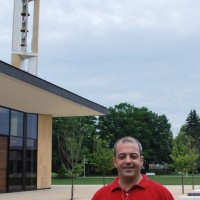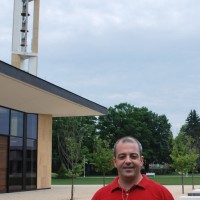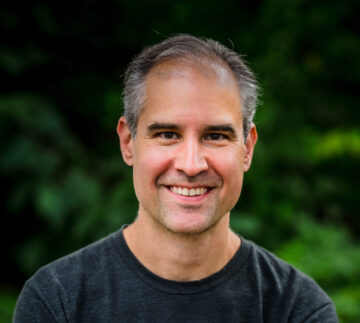May 17, 2023
How Hardening Schools Could Harm Students
An item from a neo-liberal… This one is an item from a business professor with little direct experience in education, but who believes free market economic principles are the answer to education’s (and pretty much all other society’s social) problems.
Open in app or online You’re on the free list for The Future of Education.
How Hardening Schools Could Harm Students
Plus, Will AI Be a Disruptive Innovation or a Sustaining Innovation?
In the aftermath of horrific school shootings across the country, schools have instituted a range of security measures. Diane Tavenner and I have felt compelled for some time to talk about what is happening to schools in response to the tragic mass shootings. In the latest episode of Class Disrupted, we did just that.
I’d encourage you to listen to or read the whole episode because there’s a lot of nuance in our points. This was not an easy conversation. We chose not to address the tragic incidents themselves, but instead schools’ responses to them.
Our basic argument is that when schools choose to “harden” themselves, they are making a design decision. Hardening schools refers to any practice to implement security measures, including protecting front doors, locking classroom doors, adding metal detectors and armed security, installing cameras, running through active shooter drills, equipping teachers with guns—and more.
Schools understandably feel a tremendous amount of pressure to implement these measures in the wake of these mass shootings. But in Diane’s view, they are being implemented quickly and “without the types of design processes we constantly talk about that enable a rigorous evaluation and consideration of what you’re actually doing to the school.”
It’s also not clear that these measures are actually improving security. See this article in Education Next for example.
But there is some evidence that the measures may be harming the mental health of students—which many argue is a prime factor in the shootings. That alone suggests school communities must consider the impact of any proposed changes.
Diane and I ultimately don’t make a strong recommendation of what any specific school community should or shouldn’t institute. Each circumstance is different. But we do say that all school communities must be more intentional about the design decisions they are making when they harden because these steps impact the nature of our schools, the lives of children, and our society more broadly. Listen to or read the transcript of the whole episode here.
AI: Disruptive or Sustaining Innovation?
Will artificial intelligence (broadly speaking) disrupt all that we know in schools? Or will it be a sustaining innovation? As always, the answer depends—and, despite the hype, it won’t be dependent on the technology by itself.
In the case of AI, the technology is potentially a disruptive technology—the kernel around which major disruptive innovations that reinvent whole systems can be built. But just because it represents such an inflection doesn’t mean AI will be used that way.
Each education organization—each school, college, university, company—now confronts a choice. They can implement AI as a sustaining innovation to improve what they do currently or implement it in a new business or organizational model to launch a disruptive innovation. Or they can deploy a dual transformation strategy and do both. The key is recognizing the importance of building new models around the AI and not assuming that the technology alone represents a silver bullet. For those that seek to pioneer it as a disruptive innovation, new systems—or value networks—will need to be built as well around the innovation. I write about the implications of this last point in a recent piece I published in Forbes that will be sent to you all tomorrow.
From my vantage point, AI stands poised to empower students throughout the world in their learning journeys both outside of school and inside—if we embrace it. The big trend of AI will be to put the tools in the hands of learners to learn whatever they want; to create more easily; and to up-level their work. For providers, the barriers to creating higher quality, lower cost interactive learning content will be lower than ever before. Assessments will be more plentiful. And the future of work for when students leave schools will involve AI in all parts of their day. But does that mean that schools will transform in turn as well? That’s the open question.
Here are four other items on AI in education that might interest you:
It’s Not Just About ChatGPT. Other AI Technologies Are Heading to Schools, by Arianna Prothero in Education Week (with quotes from yours truly)
We’re Asking the Wrong Questions About AI, by Paul LeBlanc in Inside Higher Ed
The Five Pathologies of EdTech Discourse About Generative AI, by Glenda Morgan in On EdTech Newsletter by Phil Hill & Associates
Do College Rankings Matter and Is a Bachelor’s Degree Even Worth It?
On a recent episode of Future U., I interviewed Jeff Selingo about the future of college rankings and about a new report he coauthored with the Burning Glass Institute’s Matt Sigelman, Vivek Sampathkumar, and Luke Chen on the value of college.
On college rankings: one big question spurred by a recent Wall Street Journal article was whether the U.S. News and World Report undergraduate rankings might disappear. Count Jeff as skeptical, but as he also noted, the rankings played an important role early on, as the federal government didn’t even collect basic data about colleges in the 1980s and ‘90s. A lot has changed since then, as the government now mandates a common dataset for colleges and universities—but even then that data still isn’t audited. Of course, U.S. News doesn’t audit these numbers either, which has led to some high-profile misinformation and maneuverings by institutions to game the rankings.
Some other nuggets that I found fascinating were how U.S. News tweaks the formula for college rankings only after they receive the data from all the schools. Presumably to make sure that Harvard, Yale, and Princeton always remain near the top—and that there is enough variation from year to year to keep the rest interesting.
Jeff and I both spoke about how we appreciated the recently-released New York Times personalized college ranking tool—and Jeff speculated that AI could help prospective students personalize them even more in the future.
On the topic of the value of the bachelor’s degree: the headline Jeff said is that, yes, the bachelor’s degree is still, on average, worth it. But not all bachelor’s degrees are created equal. Interestingly, Jeff said they found that graduates with technology and engineering degrees from less selective institutions out-earn those who earn business, social science, health, and life science degrees from top-ranked schools. Highly selective—or highly rejective—doesn’t always mean more money in the workforce, in other words.
With that said, Jeff reported that they found that many two-year degrees—like those found at community colleges—are no more valuable than those with no degree. When you combine that reality with the lack of successful transfer to four-year institutions from community colleges—well, the picture isn’t pretty.
Jeff also talked about the findings that there are three legs to the stool in the value of a degree: the institution you attend, the major, and the skills you get. There is significant power in stacking skills when combined in ways that differentiate the individual. For instance, a public administration major with a skill set in investments can see their wage premium rise by nearly one third.
We wrapped up the show with a question from a faculty member at Hiram College, who asked, “How can we help students and colleagues understand that care does not equal soft or low expectations? How do we make sure that a caring classroom includes appropriate strictness?”
My answer? Being more rigorous shows that you care. True love is showing individuals in your life that we believe they can do hard things when we hold them to high expectations. As Clay Christensen always told his children, “You can do hard things.”
Check out the full episode here.
Two More Before You Go
It seems that Florida is constantly in the news right now around Governor Ron DeSantis’s higher education moves. In an episode of Future U., Jeff and I interviewed former Florida Governor Jeb Bush to add context to the current debates and provide some perspective for both sides. Bush reflected on his own experiences, successes, and regrets when it comes to the higher education policies he championed. Check out the episode here, at “A Look Back at Governor Jeb Bush’s Florida Higher Ed Policies.”
Finally, as I turn my attention to helping individuals more fruitfully switch jobs and careers—I’m in the early stages of writing a book on the topic with two amazing coauthors!—I penned a piece with Ryan Stowers, the executive director of the Charles Koch Foundation, on why employers should care about purpose in RealClearMarkets.
Research indicates workers want jobs that give them meaning. In a competitive labor market, individuals will not take a job where the hours spent working do not connect to who they are as a person—the interests they have, the goals they want to achieve, and the progress they want to make in their lives. Still, many employers are slow to respond to this signal, or don’t know how.
In the op-ed, we argue that facilitating lifelong learning is part of the answer. Business leaders can offer employees the chance to “define, refine, and redefine” their purpose through in-house educational opportunities or partnerships with online hybrid universities, local colleges, or trade associations.
The key is for employers to “support the journey — no matter where it happens, or where it leads.”
And what if the journey leads employees away from their current jobs? Our research shows when companies do not align with how their employees frame what progress looks like to them, the chances of an employee leaving go up in today’s tight labor market anyway. By responding to workers’ desires for purposeful work specifically, companies will “become the first-choice place of employment” and will see higher rates of employee satisfaction, customer satisfaction, and profitability. Check out our point of view here.
As always, thanks for reading, writing, and listening.
LIKE
COMMENT
RESTACK
© 2023 Michael Horn
No comments yet.
RSS feed for comments on this post. TrackBack URI
- SEO Powered Content & PR Distribution. Get Amplified Today.
- PlatoAiStream. Web3 Data Intelligence. Knowledge Amplified. Access Here.
- Minting the Future w Adryenn Ashley. Access Here.
- Buy and Sell Shares in PRE-IPO Companies with PREIPO®. Access Here.
- Source: https://virtualschooling.wordpress.com/2023/05/17/how-hardening-schools-could-harm-students/
- :has
- :is
- :not
- :where
- $UP
- 11
- 17
- 40
- 8
- a
- About
- Achieve
- across
- active
- actually
- add
- adding
- address
- administration
- After
- aftermath
- AI
- ai in education
- align
- All
- alone
- also
- always
- amazing
- amount
- an
- and
- answer
- any
- anyway
- appropriate
- ARE
- argue
- argument
- armed
- around
- article
- artificial
- artificial intelligence
- AS
- assessments
- associations
- At
- attend
- attention
- audit
- audited
- auto
- average
- away
- back
- barriers
- basic
- BE
- because
- before
- begin
- being
- believe
- believes
- Big
- book
- both
- Both Sides
- broadly
- Building
- built
- business
- but
- by
- cameras
- CAN
- care
- case
- Category
- Center
- championed
- Chance
- chances
- changed
- Changes
- Charles
- ChatGPT
- check
- chen
- Children
- choice
- Choose
- chose
- Christensen
- class
- clear
- colleagues
- collect
- College
- Colleges
- combine
- combined
- comes
- comment
- comments
- Common
- Communities
- community
- Companies
- compelled
- competitive
- Connect
- Consider
- consideration
- constantly
- content
- context
- Conversation
- Cost
- could
- country
- course
- create
- created
- Creating
- Current
- Currently
- customer
- Customer satisfaction
- data
- day
- debates
- decision
- decisions
- Degree
- dependent
- deploy
- Design
- Despite
- Diane
- DID
- different
- differentiate
- direct
- Director
- disappear
- Disrupt
- disruptive
- do
- does
- Doesn’t
- doing
- Dont
- doors
- each
- Early
- earn
- easily
- easy
- Economic
- ed
- edtech
- Education
- Education Week
- educational
- either
- embrace
- Employee
- Employee Satisfaction
- employees
- employers
- empower
- enable
- encourage
- end
- Engineering
- enough
- episode
- equal
- Ether (ETH)
- evaluation
- Even
- EVER
- evidence
- example
- executive
- Executive Director
- expectations
- experience
- Experiences
- facilitating
- factor
- fascinating
- Federal
- Federal government
- feedback
- feel
- findings
- florida
- For
- Forbes
- Former
- formula
- found
- Foundation
- four
- FRAME
- Free
- from
- front
- future
- Future of Work
- game
- generative
- get
- Give
- glass
- Go
- Goals
- good
- Government
- Governor
- Hands
- Happening
- happens
- Hard
- harm
- harming
- harvard
- Have
- he
- Heading
- headline
- Health
- help
- helping
- High
- high-profile
- higher
- Higher education
- highly
- his
- hold
- HOURS
- How
- HTTPS
- Hybrid
- Hype
- i
- identifier
- if
- Impact
- implement
- implemented
- implications
- importance
- important
- improve
- improving
- in
- In other
- includes
- Including
- indicates
- individual
- individuals
- Innovation
- innovations
- installing
- instance
- instead
- Institute
- Institution
- institutions
- Intelligence
- Intentional
- interactive
- interest
- interesting
- interests
- interviewed
- Investments
- IT
- items
- itself
- Job
- Jobs
- journal
- journey
- Journeys
- just
- Keep
- Key
- Know
- Koch
- labor
- labor market
- Lack
- Last
- launch
- leaders
- Leads
- LEARN
- learning
- Leave
- leaving
- Led
- legs
- less
- Life
- Life Science
- like
- List
- Listening
- little
- Lives
- local
- Look
- LOOKS
- Lot
- love
- Low
- major
- make
- Making
- mandates
- many
- Market
- Mass
- Matter
- May..
- mean
- meaning
- measures
- member
- mental
- Mental health
- Meta
- metal
- Michael
- might
- Misinformation
- model
- models
- money
- more
- Morgan
- moves
- much
- must
- my
- Nature
- Near
- nearly
- Need
- New
- news
- Newsletter
- no
- noted
- now
- Nuance
- numbers
- of
- offer
- on
- ONE
- online
- only
- open
- opportunities
- or
- organizational
- Other
- our
- out
- outside
- own
- part
- partnerships
- parts
- Paul
- personalize
- Personalized
- perspective
- PHIL
- picture
- piece
- pioneer
- Place
- plato
- Plato Data Intelligence
- PlatoData
- played
- Point
- points
- poised
- policies
- Post
- potentially
- power
- practice
- Premium
- presentation
- pressure
- pretty
- Prime
- princeton
- principles
- problems
- processes
- Professor
- profitability
- Progress
- proposed
- prospective
- protecting
- provide
- providers
- public
- published
- purpose
- put
- quality
- question
- Questions
- quickly
- quotes
- range
- Ranking
- Rates
- Read
- Reading
- Reality
- really
- receive
- recent
- recognizing
- Recommendation
- reduce
- refers
- refine
- reflected
- Regrets
- remain
- report
- Reported
- represents
- research
- resource
- Respond
- responding
- response
- responses
- REST
- right
- rigorous
- Rise
- Role
- RON
- running
- Ryan
- s
- Said
- satisfaction
- say
- School
- Schools
- Science
- security
- security measures
- see
- Seek
- seems
- selective
- sent
- set
- shooter
- should
- show
- Shows
- Sides
- Signal
- significant
- Silver
- Simple
- since
- site
- skeptical
- skill
- skills
- slow
- Social
- Society
- Soft
- some
- spam
- speaking
- specific
- specifically
- spent
- stacking
- stages
- stands
- Steps
- Still
- Strategy
- street
- strong
- Students
- successful
- such
- Suggests
- sure
- Switch
- syndication
- Systems
- TAG
- Take
- Talk
- teachers
- Technologies
- Technology
- than
- thanks
- that
- The
- The Future
- The Future of Work
- the world
- their
- Them
- themselves
- then
- There.
- These
- they
- things
- Third
- this
- those
- three
- Through
- throughout
- time
- times
- to
- today’s
- tomorrow
- tools
- topic
- trade
- Transcript
- transfer
- Transform
- Transformation
- Transformation Strategy
- tremendous
- Trend
- true
- truly
- TURN
- two
- types
- u.s.
- Ultimately
- under
- understand
- Understandably
- Universities
- university
- used
- Valuable
- value
- vantage point
- View
- wage
- Wake
- Wall
- Wall Street
- Wall Street Journal
- want
- was
- Way..
- ways
- we
- week
- WELL
- were
- What
- What is
- whatever
- when
- whether
- which
- WHO
- whole
- why
- will
- with
- WordPress
- words
- Work
- workers
- Workforce
- working
- world
- worth
- Wrapped
- write
- writing
- Wrong
- year
- yes
- yet
- york
- you
- Your
- zephyrnet

